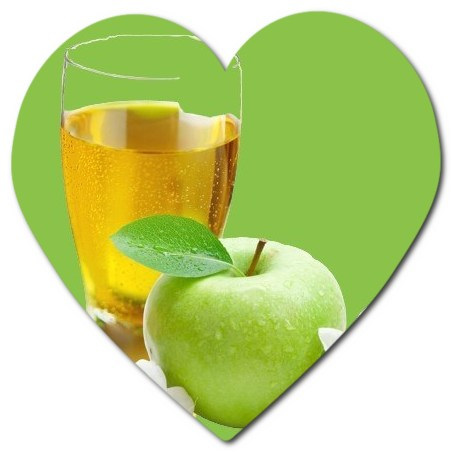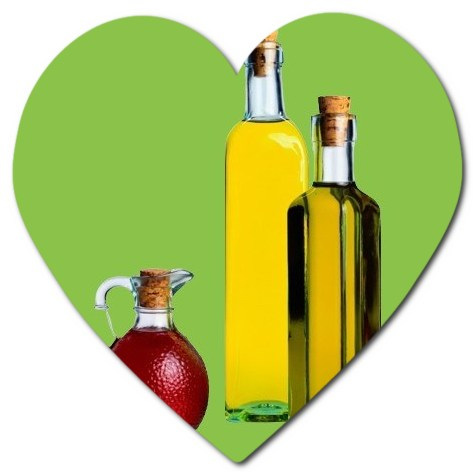This is because vinegar is a product that can be easily obtained from many types of fruit. The most common types of vinegar are apple cider vinegar, grape vinegar, hawthorn vinegar, white vinegar, quince vinegar, balsamic vinegar, apricot vinegar and pomegranate vinegar. From reducing the risk of cardiovascular diseases to the rapid healing of urinary tract infections, hawthorn vinegar, with its countless benefits and powerful antioxidant properties, is a vinegar that will make you forget all the vinegars you know and use so far. White vinegar is generally used for household cleaning. You can also wipe surfaces, windows and mirrors with a mixture of vinegar and water.
Hawthorn vinegar is beneficial in heart, vascular, nerve compression and rhythm disorders. Apple cider vinegar is used in weight loss and diet applications as well as its fat burning properties. Apple cider vinegar also prevents fatty liver. It can also be used in hair and body cleaning. While artichoke vinegar is beneficial for liver diseases and cholesterol, it has disinfecting properties in stomach and intestinal disorders. Pomegranate vinegar, which we highly recommend for antioxidant, blood purification and diarrhea, also has blood pressure and cholesterol lowering properties. Lemon vinegar, which has vitamin C properties, is used in immune system disorders, cleaning blood fats and infectious diseases.

Is distilled vinegar 100% vinegar? White vinegar, also known as distilled vinegar or spirit vinegar, is a type of vinegar made from fermented ethanol and acetic acid. There are numerous types of vinegar, each with its unique flavor profile and uses. The variety arises from different base ingredients and fermentation processes. What are the most useful types of vinegar? >>
- White Vinegar: Made from fermented grain alcohol, usually derived from corn. It has a sharp, tangy flavor and is commonly used in pickling and salad dressings.
- Apple Cider Vinegar: Made from fermented apple juice. It has a slightly fruity taste and is often touted for its potential health benefits. It is used in cooking, salad dressings, and as a health tonic.
- Red Wine Vinegar: Produced from fermented red wine. It has a robust, tangy flavor and is frequently used in salad dressings, marinades, and Mediterranean cuisine.
- White Wine Vinegar: Made from fermented white wine. It has a milder flavor compared to red wine vinegar and is used in cooking, salad dressings, and sauces.
- Balsamic Vinegar: Originating from Italy, balsamic vinegar is made from aged grape must. It has a sweet and complex flavor with a dark, syrupy consistency. It is commonly used in salad dressings, marinades, and drizzled over dishes like strawberries and Parmesan.
- Rice Vinegar: Commonly used in Asian cuisine, rice vinegar is made from fermented rice. It has a mild and slightly sweet flavor and is used in sushi rice, marinades, and dressings.
- Malt Vinegar: Made from malted barley and often used in British cuisine, especially for fish and chips. It has a malty and somewhat sweet flavor.
- Sherry Vinegar: A Spanish vinegar made from sherry wine. It has a rich, nuanced flavor and is used in dressings, marinades, and reductions.
- Champagne Vinegar: Made from fermented champagne or sparkling wine. It has a light and delicate flavor, often used in vinaigrettes and gourmet dishes.
- Distilled Vinegar: A clear vinegar made through the fermentation of distilled alcohol. It is versatile and used in various culinary applications, including pickling and cleaning.
- Coconut Vinegar: Made from fermented coconut water. Common in Southeast Asian cuisine, it has a slightly sweet taste and is used in cooking and dressings.
- Date Vinegar: Made from fermented dates. It has a sweet and tangy flavor and is used in Middle Eastern cuisine.
These are just a few examples, and there are many other specialty vinegars with unique flavors and uses. The type of vinegar you choose depends on the dish you’re preparing and your personal taste preferences.
Which type of vinegar is used for cooking?
Which is the preferred vinegar for cooking? White vinegar is a fermented liquid made of acetic acid and water. It is often used in food preparation, pickling and canning, household cleaning and agricultural activities. When properly scaled, white vinegar can also be used as an aid in the treatment of certain medical conditions.

The type of vinegar used for cooking depends on the recipe, the flavor profile desired, and regional culinary traditions. Here are some common types of vinegar used in cooking:
- White Vinegar: This is a versatile vinegar with a sharp, tangy flavor. It is often used in pickling, marinades, and various recipes where a neutral acid flavor is desired.
- Apple Cider Vinegar: Widely used in both cooking and health tonics, apple cider vinegar has a slightly fruity flavor. It is commonly used in salad dressings, marinades, and sauces.
- Red Wine Vinegar: With a robust and tangy flavor, red wine vinegar is popular in Mediterranean and French cuisine. It is used in salad dressings, marinades, and to add acidity to stews and sauces.
- White Wine Vinegar: Similar to red wine vinegar, white wine vinegar has a milder flavor. It is used in a variety of dishes, including salads, vinaigrettes, and sauces.
- Balsamic Vinegar: Known for its sweet and complex flavor, balsamic vinegar is often used in salad dressings, marinades, and drizzled over vegetables, fruits, and meats.
- Rice Vinegar: Commonly used in Asian cuisine, rice vinegar has a mild and slightly sweet flavor. It is used in sushi rice, stir-fries, dressings, and marinades.
- Sherry Vinegar: This Spanish vinegar has a rich and nuanced flavor. It is used in a variety of dishes, including vinaigrettes, sauces, and reductions.
- Malt Vinegar: Often used in British cuisine, especially with fish and chips, malt vinegar has a malty and somewhat sweet flavor.
- Distilled Vinegar: Clear and neutral in flavor, distilled vinegar is commonly used in pickling, marinades, and various recipes where a straightforward acid is needed.
- Champagne Vinegar: With a light and delicate flavor, champagne vinegar is used in vinaigrettes, sauces, and gourmet dishes.
The choice of vinegar depends on the flavor profile you want to achieve in your dish. It’s also worth noting that some specialty vinegars, such as tarragon vinegar, herb-infused vinegars, or specific fruit vinegars, can add unique flavors to your cooking. Experimenting with different types of vinegar can enhance the depth and complexity of your dishes.
Which vinegar is best to use?
The “best” vinegar to use depends on the specific recipe, your personal taste preferences, and the culinary traditions associated with the dish. Different types of vinegar offer various flavors, acidity levels, and aromatic notes, so it’s helpful to choose one that complements the ingredients and overall flavor profile of your dish. Here are some common scenarios where specific vinegars are often preferred:
- Salad Dressings:
- Balsamic Vinegar: Adds a sweet and complex flavor to salads. Traditional balsamic vinegar is especially prized for its rich taste.
- Red Wine Vinegar: Popular in Mediterranean-style dressings, providing a robust and tangy flavor.
- White Wine Vinegar: Offers a milder flavor, suitable for delicate salads or vinaigrettes.
- Apple Cider Vinegar: Provides a slightly fruity and tangy taste, often used in vinaigrettes for salads with fruits or vegetables.
- Marinades:
- Apple Cider Vinegar: Adds a tangy flavor and works well in marinades for meats, especially pork.
- Red Wine Vinegar: Complements beef and lamb dishes in marinades.
- White Wine Vinegar: Suitable for marinades with poultry or fish.
- Pickling:
- White Vinegar: Preferred for its neutral taste, allowing the flavors of the pickled ingredients to shine.
- Apple Cider Vinegar: Adds a hint of fruitiness to pickled fruits and vegetables.
- Asian Cuisine:
- Rice Vinegar: Commonly used in Asian dishes, particularly for sushi rice, stir-fries, and dressings.
- White Vinegar: Found in some Asian pickles and sauces.
- Fish and Chips:
- Malt Vinegar: A classic choice for drizzling over fish and chips in British cuisine.
- Specialty Dishes:
- Sherry Vinegar: Used in Spanish and Mediterranean cuisine, particularly in sauces and reductions.
- Champagne Vinegar: Provides a light and delicate touch, suitable for gourmet dishes.
Remember, taste is subjective, and personal preferences play a significant role in choosing the best vinegar for a particular dish. It’s often worthwhile to experiment and find the vinegar that enhances the flavors you enjoy. Additionally, considering the acidity level of the vinegar and the overall balance of your dish is essential for achieving the desired culinary result. The Best Types of Vinegar >>
